LISA Data Challenge 1: Radler
We are glad to announce the release of datasets for the first “new” LISA Data Challenge, codenamed Radler. The purpose of this first challenge is to tackle the main LISA sources separately, under an idealized instrument-noise model. Our aim is to introduce new researchers to LISA data analysis, to rehabilitate existing analysis codes developed during the original Mock LISA Data Challenges (2005–2011), and to establish LDC process and standards.
Radler includes six subchallenges, described below. This challenge will not be blind (source parameters are available), but you are welcome to try the analysis without referring to the answer. Furthermore, versions of the datasets without instrument noise are included in the release. LDC working-group members will be preparing their own analysis using their algorithms of choice, and invite you to join them (to do so, e-mail us so we can pair you appropriately). Of course, you may organize to work on your own, or with your collaborators.
For usage tracking purposes, we request that you set up a login for this website before downloading the datasets. Please submit your results by December 31, 2019, using the submission interface and format that will appear shortly on this page. Please plan to include a description of your methods (or a link to a methods paper) with your submission. We would also greatly appreciate it if you were to share your code (e.g., on GitHub, or on our GitLab).
While we did our best to check the datasets for correctness, small problems or inconsistencies may have escaped us. The best way to validate the data is to analyze it, so let us know of any problems!
LDC1-1. A single GW signal from a merging massive-black-hole binary.
LIGO and Virgo have done it, so let's get LISA on the right path! MBHBs are represented with a frequency-domain inspiral–merger–ringdown phenomenological model (IMRPhenomD). The black holes are spinning, with spin vectors parallel to the orbital angular momentum. The release includes datasets for two methods (frequency- and time-domain) of applying the LISA response to the GWs.
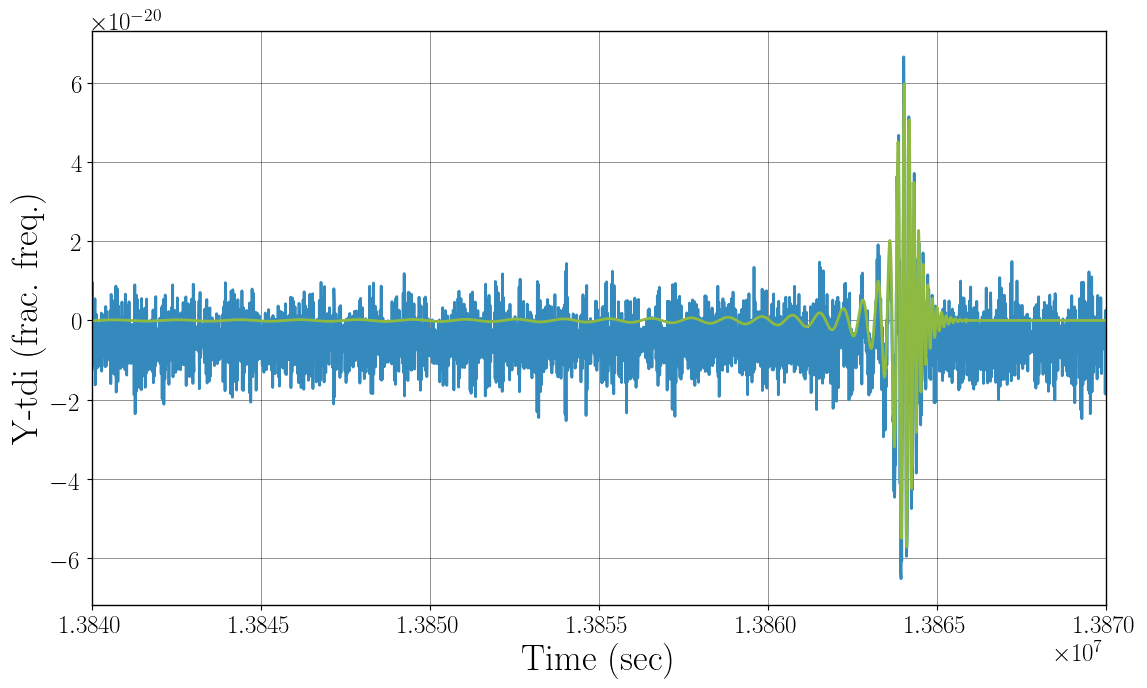
LDC1-2. A single GW signal from an extreme-mass-ratio inspiral.
EMRIs are modeled with the “classic” Analytic Kludge waveforms, which will be updated in future challenges, so make your code flexible! The signal is produced in the time domain and the response is applied using LISACode. The signal is of moderate strength, but the source parameters are drawn from relatively wide priors. This should make for a good challenge!
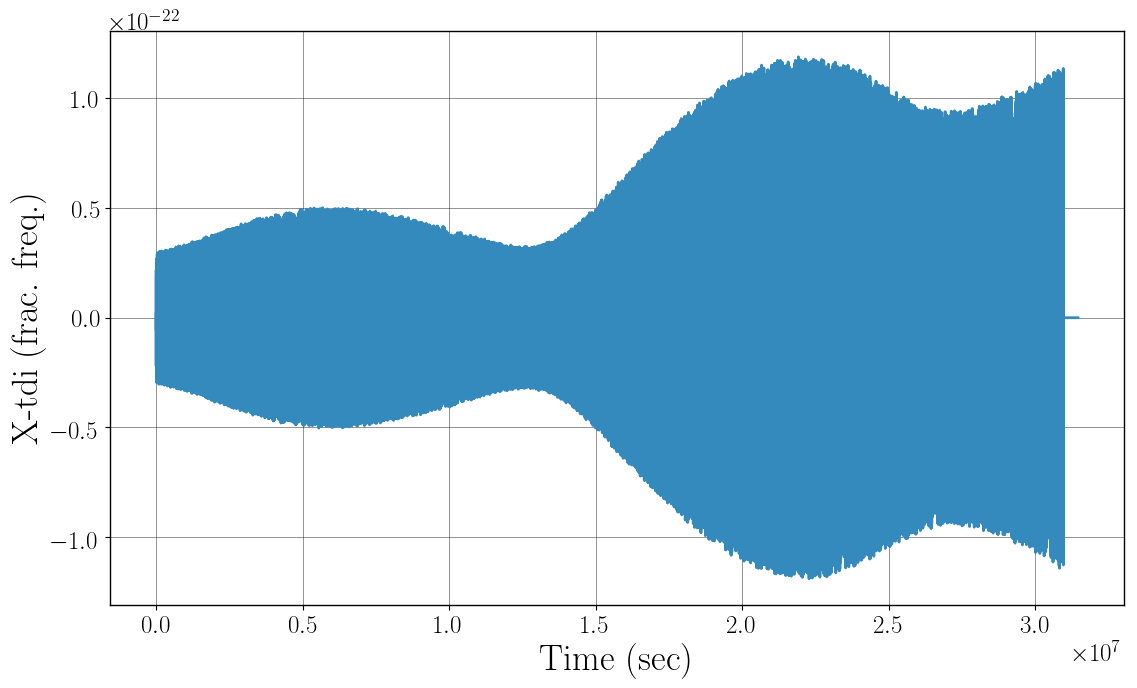
LDC1-3. Superimposed GW signals from several verification Galactic white-dwarf binaries.
We assume circular orbits and purely gravitational interactions. The phase of the signal includes frequency and first derivative. This one should be easy!
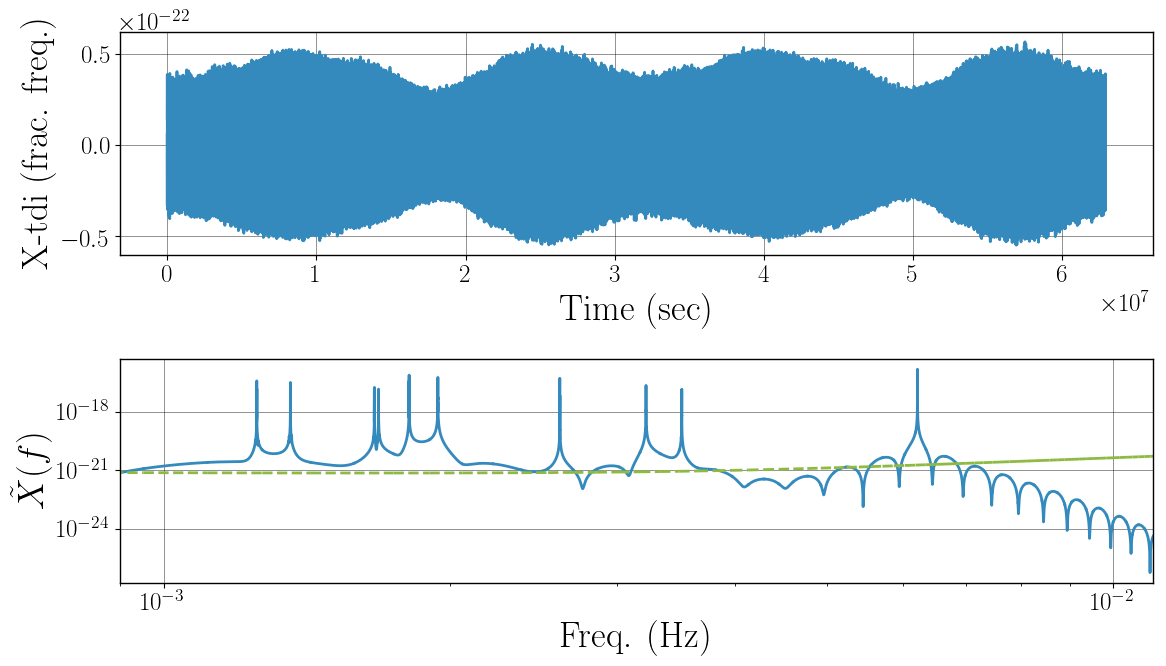
LDC1-4. A GW signal from a population of Galactic white-dwarf binaries.
Here's the classic cocktail-party problem: 26 million signals, produced with a “fast response” code. Parameters of all binaries are available in a large HDF5 file.
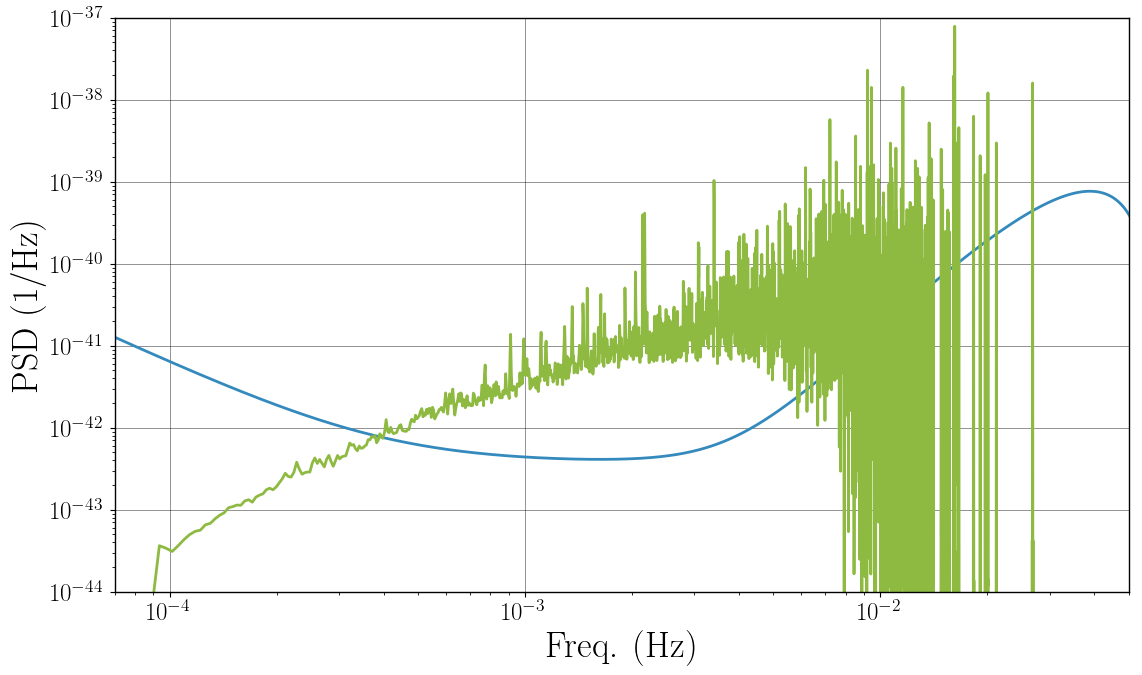
LDC1-5. A GW signal from a population of stellar-origin (stellar-mass) black-hole binaries.
LIGO and Virgo's gift to LISA. The population follows Salpeter's mass function, with an overall rate based on recent LIGO–VIRGO estimates. Waveform and LISA response are computed in the frequency domain.
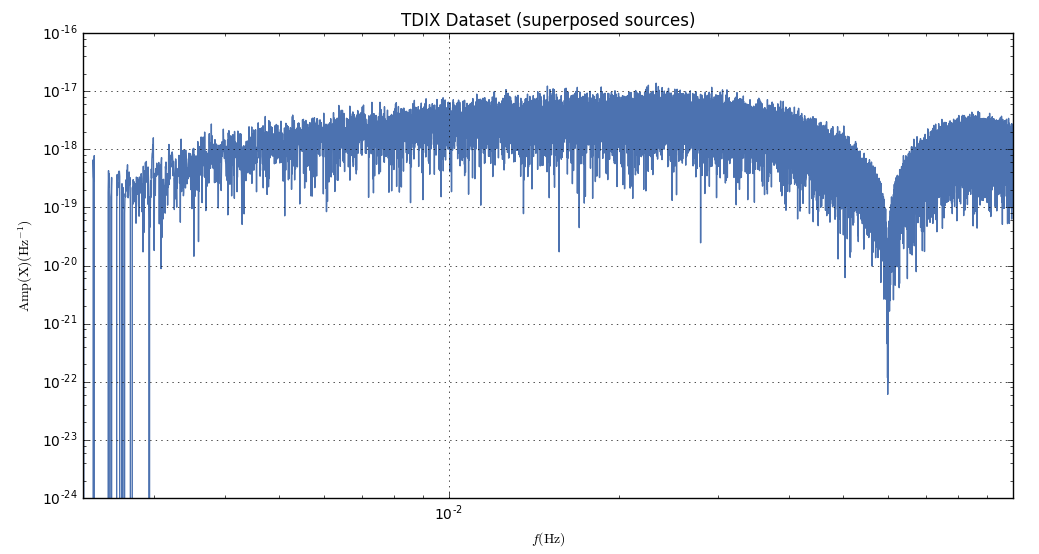
LDC1-6. An isotropic stochastic GW signal of primordial origin.
Statistics are Gaussian, but the spectral shape is shrouded in mystery, with parameters chosen for us by the LISA Consortium Cosmology Working Group. The signal is generated using LISACode as a choir of elementary sources uniformly distributed across the sky. To make things easier for you, instrumental noise is Gaussian, uncorrelated, and of the same level in each LISA link.
